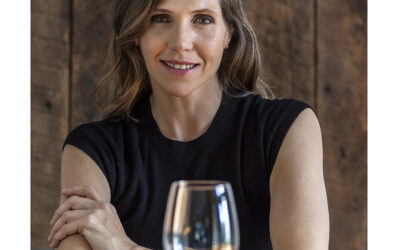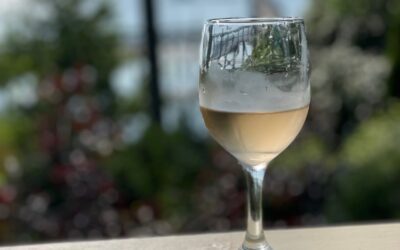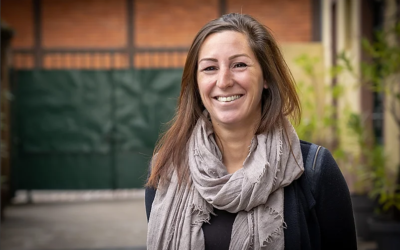UP CLOSE AND PERSONAL WITH CAROL DUVAL-LEROY
Belgian native Carol-Duval Leroy originally aspired to become a real estate agent with the ultimate goal to eventually open her own high-end restaurant. But life had another plan. Instead, and against all odds, she became one of the most influential and admired women in Champagne, France.
In the exclusive and very traditional world of Champagne, the story of Carol Duval-Leroy proves that it is possible to break the status quo, use your unconventional voice and be heard.
When her husband sadly passed from cancer in 1991, Duval-Leroy de facto became the president of one of the rare few family-owned champagne houses in Champagne.
With very little experience, the novice was nevertheless determined to keep her promise to pass on this precious legacy to their children. In a short amount of time, Duval-Leroy succeeded in carving a place for herself within a predominantly male dominated industry.
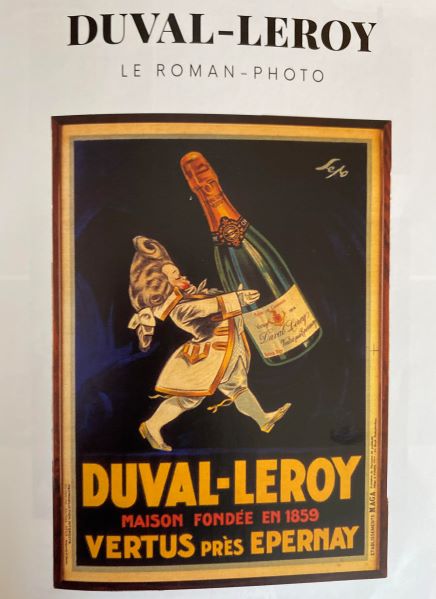
She singlehandedly revolutionized the wine world by introducing the principles of sustainable development well before it became a “thing.” Her bold game-changing approach earned her the Legion of Honor, France’s highest recognition for military and civil merits, in 2008.

After having managed to impose the Duval Leroy brand on the best tables in the world, Carol Duval-Leroy broke the glass ceiling by becoming the first woman president of the famed “Association Viticole Champenoise” (AVC) in 2007.
Founded in 1859 following the union of two families, Duval-Leroy Champagne is a family-owned Champagne house based in the Grand Cru village of Vertus in the Côte des Blancs, which has successfully remained independent for over 150 years.
Carol Duval-Leroy’s impressive journey in the Champagne world has been paved with countless awards and medals that testify to her incredible accomplishments. It’s only fitting she titled her recently published memoir “Femme de Champagne as she epitomizes that very definition.
I recently had the extreme honor to chat with Carol Duval-Leroy to talk about her memoir, her extraordinary career as a chairwoman of one of the most world-renown champagne houses, and the groundbreaking milestones that have marked her spectacular journey in the champagne world.
– Your autobiography is a compelling page turner. What an incredibly spectacular journey!
I couldn’t put the book down and wish it had more pages to read.
What was the impetus for writing it at this stage of your life?
What motivated me to write this book is the fact that I had at last been able to make my husband’s wish come true in transmitting this champagne house to our three children. He trusted me and this book is my own personal way of paying homage to him.
– When you took over the house in 1991 following your husband’s heartbreaking passing what was your biggest challenge?
For several years my biggest challenge was the fact that I was a young president and to make matters worse, Belgian. I had to fight to find my place in an ancestral conservative universe, that is highly codified and run by men.
– How did you go about so brilliantly developing the identity of the house with no to little experience?
I had to work twice as hard as I had to learn, understand, preside, direct, and raise my three sons all at once. When it comes to the champagne house, I’ll be honest. It took me 3 to 4 years to fully occupy my functions. At first, I knew very little, but I loved what I was discovering.
– Seven grapes are authorized to produce champagne with 3 (Meunier, Chardonnay Pinot Noir) being the main superstars. In your case, Chardonnay is very much part of your DNA. What motivates this stylistic choice for your cuvées?
First, because I live in the heart of the Côte des Blancs! Duval-Leroy’s vineyards are situated at the tip of the Côte des Blancs – the magistral land of the prestigious chardonnay wines. I like above it all the subtility of the chardonnay grape, its lightness and fine bubble. It’s the most feminine grape variety of them all.
– Speaking about Champagne styles, your house is one of the rare few that elaborates a Rosé de Saignée. Why this style over a Blended Rosé (Rosé d’Assemblage)?
A Rosé de Saignée is made with excellent gourmet Pinots noirs. Certain years it brought us to elaborate “Femme de Champagne” as a Rosé de Saignée. Our first vintage was 2006. I wanted a vinous rosé comporting flavors of fancy red fruits (Mara des Bois strawberries) with a mouthful feel and subtle creaminess like its bubbles with a finish that is delicately fruity. A champagne to be served with a well peppered raw fish or sea urchin.
– Always innovating you introduced new cuvées including a new Tête de Cuvée “Femme de Champagne”, which came out in 1999. A cuvée very close to your heart. What makes it special?
Among all our cuvées, the “Femme de Champagne” Cuvée is particularly special to me. Its story matches mine. The story starts in 1990. Thanks to perfect weather and a balance that you can’t always get at that latitude, the Champagne region produced extraordinary grapes. My husband Jean-Charles knew that an out of this world Cuvée was about to be born and that the day it would be revealed, it would create a new milestone in our House’s history. In fact, after the harvest, the first tastings confirmed what we had thought. But we had time – A Grand Cru takes its time and it takes years.
We designed the bottle together. Its neck was auspicious to aging and its curves stood out accordingly. I still hear about the neck which isn’t suitable for the machines and still forces our teams to wash and dress each bottle by hand – gloved hands to not leave handprints on them. In addition, we had the intertwined initials of our children’s first names engraved on it.
Jean-Charles left us while we were still looking for a name for this cuvée. The last time that we had talked about it, he suggested “Domaine”. But the Champagne region isn’t like Bordeaux and doesn’t include any real domains. It became the “Cuvée without a name” asleep in our cellars.
That cuvée taught me how to be humble in observation and to wait as long as it takes to let nature unfold. I was looking forward to discovering it. Every year, a few of us would gather around our Cellar Master and open a bottle to taste. A religious silence settled, eyes shone, but each year, its verdict fell: “It deserves for us to wait.” Because, year after year, this wine would reveal itself to be even more exceptional.
Eight years went by. It was about time to find a name for this cuvée. A name that, per my idea, should echo “Fleur de Champagne”, the first Prestige Cuvée of the House, launched by my kids’ grand-grand-father, in 1911.

It would be then, a name to start with an “F”. I spent weeks surrounded by dictionaries, going through pages, but I couldn’t find any name that would satisfy me. I was desperately looking for inspiration until it became obvious. This wine which represented a feminine ideal, with character, had already revealed its identity and wearing its name: “Femme”. “Femme de Champagne”. First, this choice surprised people. Was it really a Champagne name?
The first “Femme de Champagne” bottles came out of our cellars in 1999. A wine with golden highlights, of great precision, with a fine and full structure, whose bubbles of incredible finesse reveal an aromatic complexity where honeysuckle and white flowers blend with dried fruits and toasted notes. This cuvée was a success right away.
– In your book you talk a lot about fighting adversity being a woman and an “outsider” (you’re a Belgium native). But you defied the odds fully embracing your role as a woman president of one of the most prestigious Champagne Houses; you also became the first woman to have been named head of the Association Viticole Champenoise (AVC), and in 2008 you earned France’s highest recognition, La Legion D’Honneur. What does it mean for you to be “Femme de Champagne”?
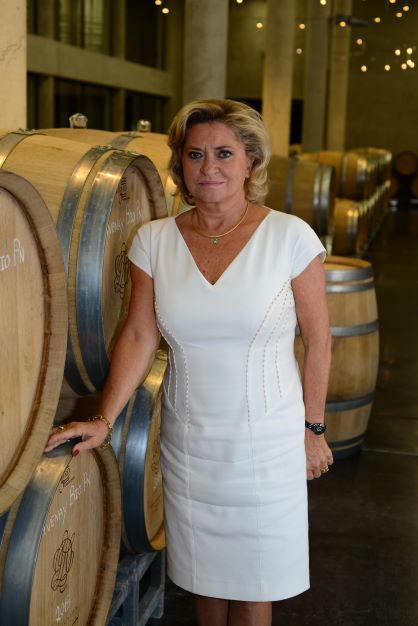
Even if women were forbidden to go down to the cellars (men claimed it would spoil and taint the wine), women have always played a key role in the history and expansion of the wines of Champagne. But they were always associated with their husbands, living in their shadow. Before being women, they were widows. I lost my husband at the beginning of the 1990s and I promised him I would pass on the Champagne House to our children, Julien, Charles, and Louis. So, I, a Belgian native, had to become a female CEO in a very traditional and male dominated Champagne industry.
To be a “Femme de Champagne” means to finally be recognized by my peers.
– Speaking about “les femmes de Champagne”, you have surrounded yourself with women over your career, including a chef de cave. Do you think women have made major strides in Champagne to attain key positions or do you believe more progress needs to be done?
At Duval-Leroy, 43% of the women employed hold key positions, including Sandrine Logette-Jardin, our cellar master, who joined the House in 1991 as the head of Quality and Oenology (Responsable de la Qualité et Œnologue). We share the same vision when it comes to champagne, the same desire to innovate and to craft champagnes of great exception. She was the first woman to be appointed cellar master in the wine world. Today, times have rapidly changed and more and more women work in Champagne, whether it be as cellar masters, heads of marketing or CEOs. Women have claimed their place and become decision-makers. It’s a good thing and the Champagne region luckily has adjusted with modern times.
Without forgetting our fight for equality and the importance of women’s role in society, we have to consider people according to their qualities, qualifications, and strength regardless of their sex. Today we find many women in oenology and sommelier schools. Young women have inherited familial estates and it has become the new normal, at last !
– Duval-Leroy is famously credited for its pioneering role in promoting a sustainable development model for its viticulture. Duval-Leroy is certified HVE and earned the “Green Business” distinction. Why is it important for you to lead this environmentally conscious movement and embrace a philosophy of sustainable viticulture?
I joined a Champagne House that was ahead of the curve and already its way to sustainable viticulture, well before ecology and environmental concerns became societal discussions. It wasn’t neither a whim nor a fantasy but rather a mature decision, observing ours and others soils throughout decades. However, these soils were deteriorating…
We are a family House from generation to generation. Each generation considers that it is its duty to leave a beautiful legacy to the one coming after. Our soils are the essence of that legacy and protecting them has been our committed dedication since the beginning.
We were going after an idealist principle: a sustainable cultivated soil and a vinification as natural as possible. In this area, we were clearly pioneers. When I arrived in Vertus in 1981 the House had already taken a radical decision: the abandonment of urban compost spreading in favor of vegetable compost. The grapes, the cornerstone of a quality wine, benefit from it even more.
– Initially your dream was to open a high-end restaurant. But you craftily created throughout the course of your career some exciting partnerships with restaurants and Michelin Star Chefs. “Come quickly I am tasting the stars” professed Dom Pérignon – you have combined culinary & bubbly stars together and regularly participate in the “Tournai des Etoilés”. Can you elaborate on this venture?
Ever since I was a child I was basking in exquisite gastronomy and growing up it quickly became a passion. I have immense respect for the work Chefs do which explain why I have always been drawn to them. In fact, this year I was named godmother of the promotion of the “Maîtres d’Hôtels de la restaurant » for 2023.
I learned a lot from these Chefs particularly how to pair food and wine. It’s been and continue to be an enriching experience with new Chefs and new ideas.
– And have you given up on the restaurant idea or is this still in your cards?
Yes, I completely gave up the idea of opening a restaurant. I leave that choicer to my children. Why not open a bistronomic restaurant here in Vertus? I will certainly add my own personal touch to it!
– In your autobiography one theme keeps recurring which is “Transmission” – your strong determination to keep the promise you made to your late husband to pass on the reins of the house to your 3 sons (Julien, Charles & Louis). Was it hard for you to communicate your passion and instill your sense of family, loyalty, legacy, and commitment to this family-owned house over to your children?
Not at all. It all happened naturally and quite organically. Let’s not forget that we all live on the estate. My children always lived here imbued with past generations.
– As you’re retiring and your sons are confidently assuming their roles at Duval-Leroy what do you look forward to the most? How, in your opinion, will this new generation shape the reputation, image, and future of the house?
I’m not yet retired. At any rate, we never really retire. As I always say I work à la carte. That means I now stick to doing what I love the most which is to travel for Duval-Leroy, organize tastings and preach the good word about Duval-Leroy.
– What is your most memorable champagne moment?
Every moment is memorable. You just must be in good company
– What advice were you given along the way which proved to be the most valuable piece of information?
There’s no recipe when it comes to being CEO of a Champagne House; you must immerse yourself into it and it’s your job to research and look for information
– What is the one question you wish I had asked you but didn’t?
I think the past 30 years went by at the speed of light. If I had to do it all over again, I absolutely would!
For more information go to: http://www.duval-leroy.com/en/home/

